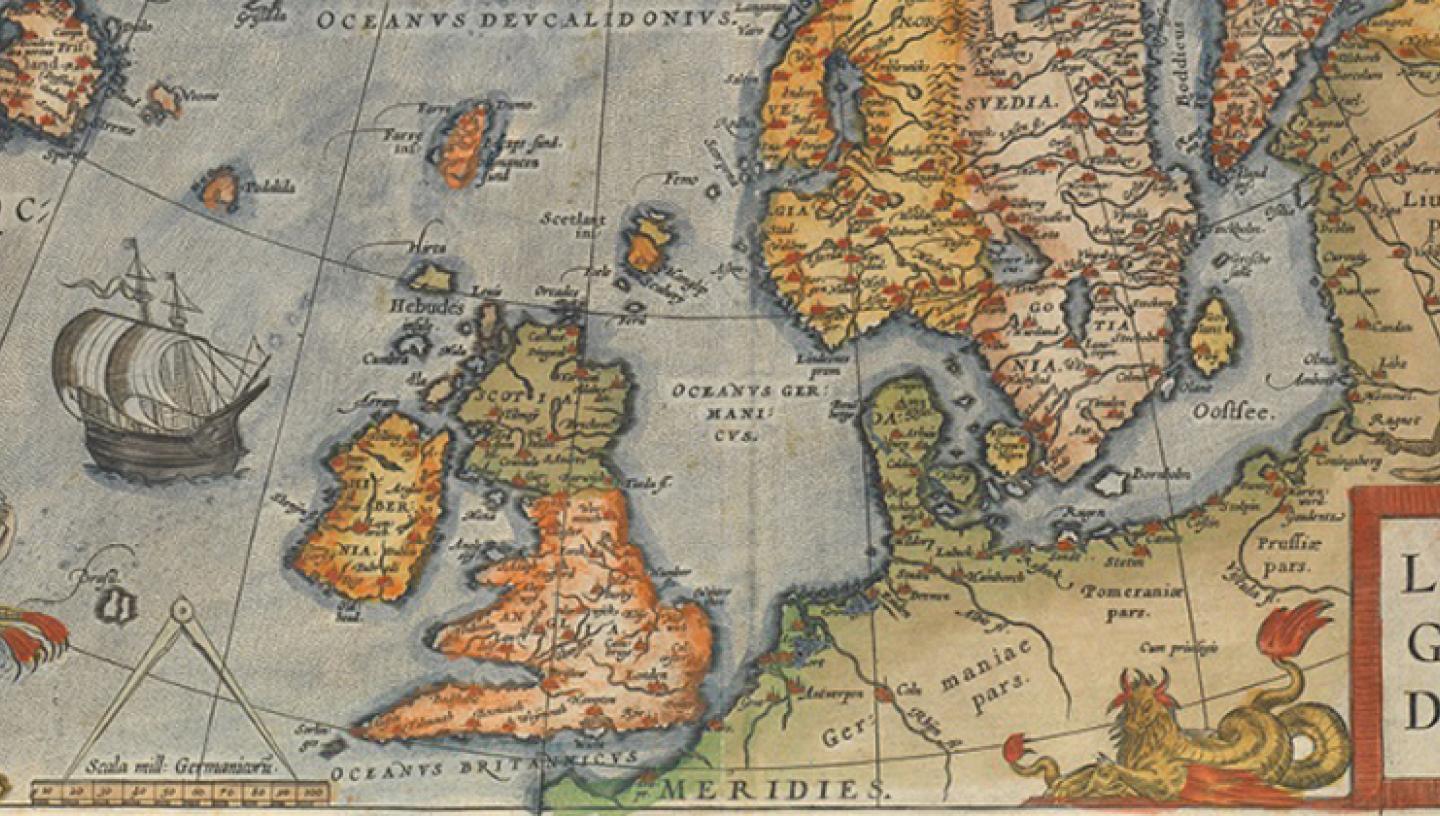
12 Jan 2016
Rosie-Faye Hart continues to share her fascinating work conserving our map collection. Today we look at copper-green degradation on two maps, c.1588.
Last week I wrote about the treatment of an early printed map by Giacomo Gastaldi from 1564 (see it here). Although this particular map was not hand-coloured, many of the other early printed maps and charts have been hand-coloured with watercolour pigments, some of which can cause a variety of problems to the paper they are decorating. Copper pigments promote the degradation of paper and over time can gradually change colour from a vibrant green or blue to brown and effectively ‘strike’ its way through the paper. This pigment is very sensitive to humidity and light, and if left uncontrolled these environmental conditions can accelerate their deterioration, leaving the paper brittle and damaged.
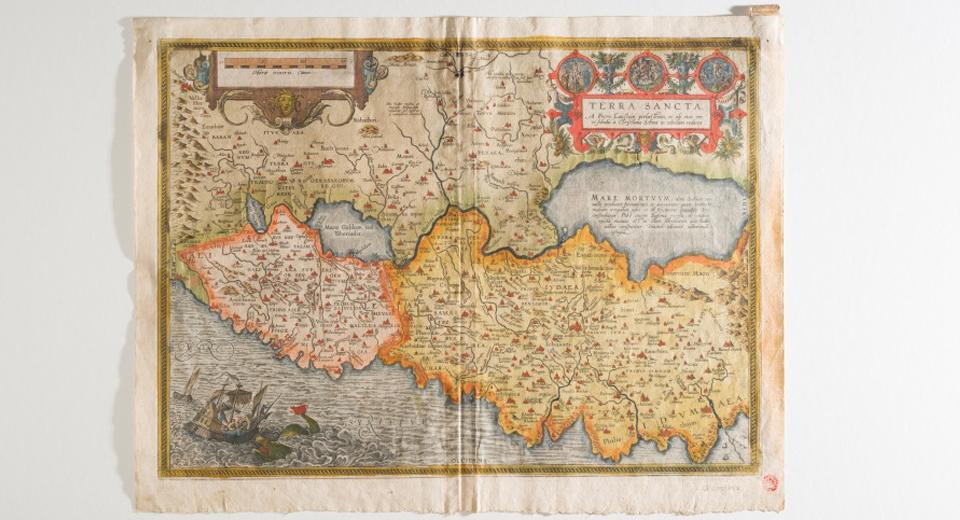
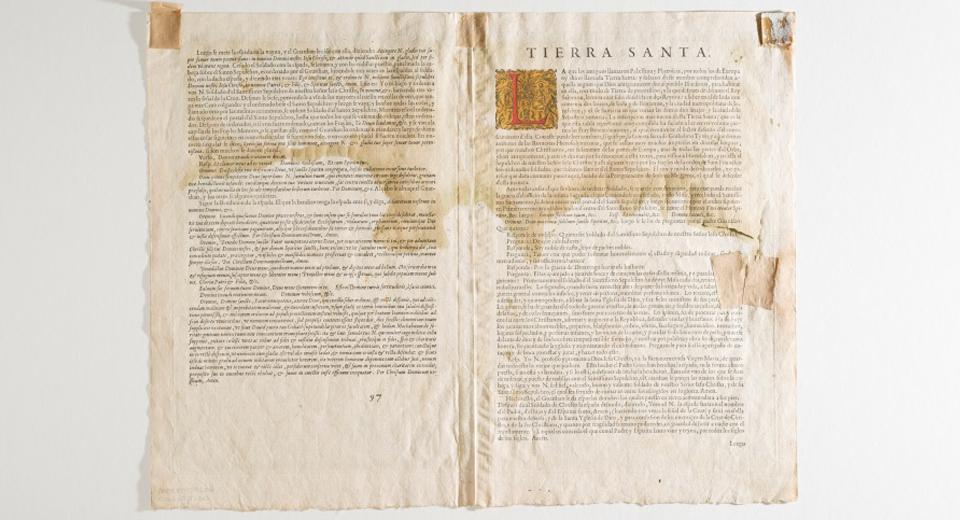
Verdigris is a basic copper acetate and has been used from times of antiquity up until the 19th Century. The pigment was usually formed by treating copper plates with vinegar at an elevated temperature until green crystals form over the surface. These would then be scraped off and ground into a dry pigment, ready to mix with a binder such as Gum Arabic.
One of the areas I have been researching more closely in my work with the maps and charts has been how to appropriately repair the damage caused by copper pigments without introducing too much moisture.
I decided to use a method investigated at the National Library of Austria’s Conservation Department involving the use of a ‘remoistenable repair tissue’ specifically for copper pigments on paper. This is a very fine Japanese repair tissue with a measured amount of adhesive applied to it and dried out, which is then reactivated with a minimal amount of moisture and applied to the object.
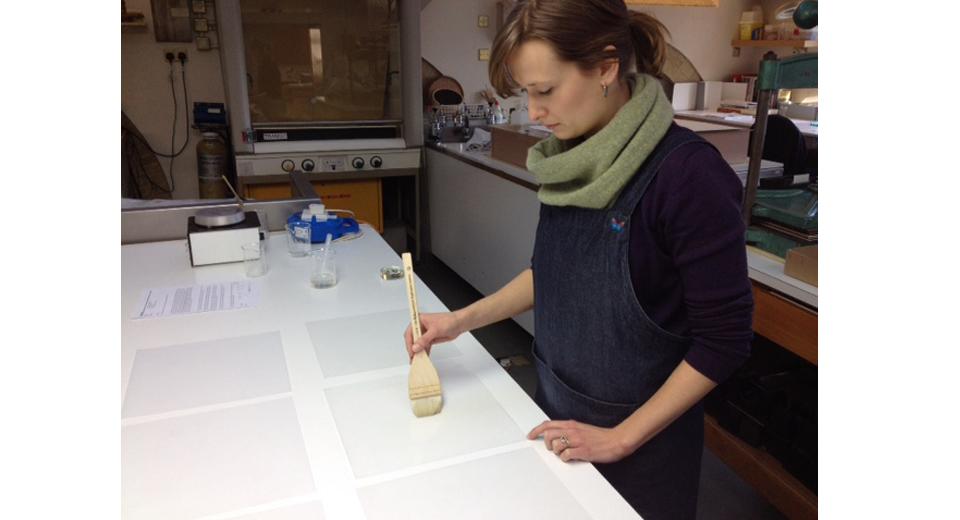
Two of the most deteriorated maps I applied this method to were published by Abraham Ortelius c.1588. At first glance the level of degradation may not have seemed too severe, however, a closer look revealed that the areas where the copper pigment was present were incredibly brittle, and fractures and losses had occurred. From the back it was also clear that the pigment had ‘struck’ through the paper and undergone a certain level of colour change.
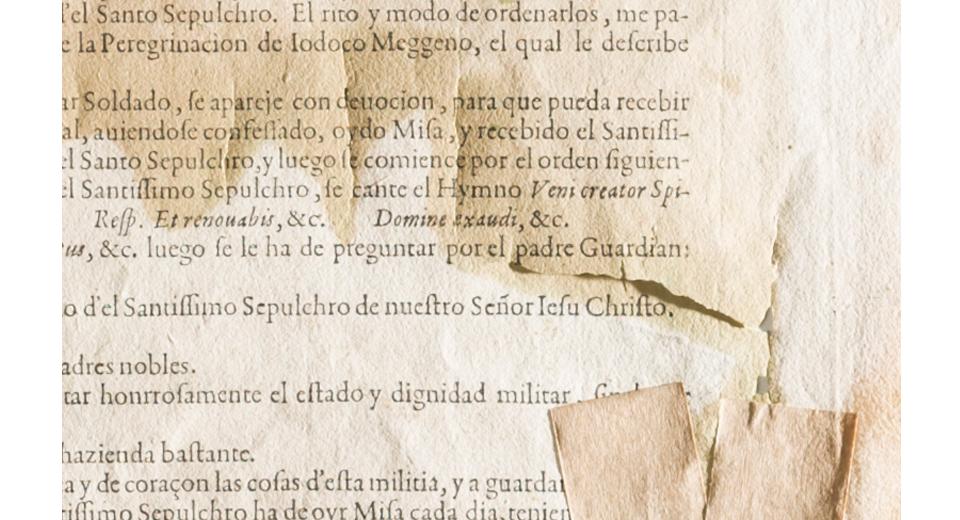
I decided to apply the repair tissue in sections along the damaged and vulnerable areas to enable a more controlled application, as well as avoiding any distortions that larger repairs might make.
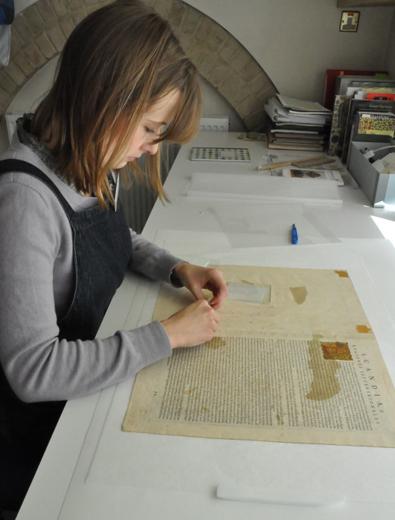
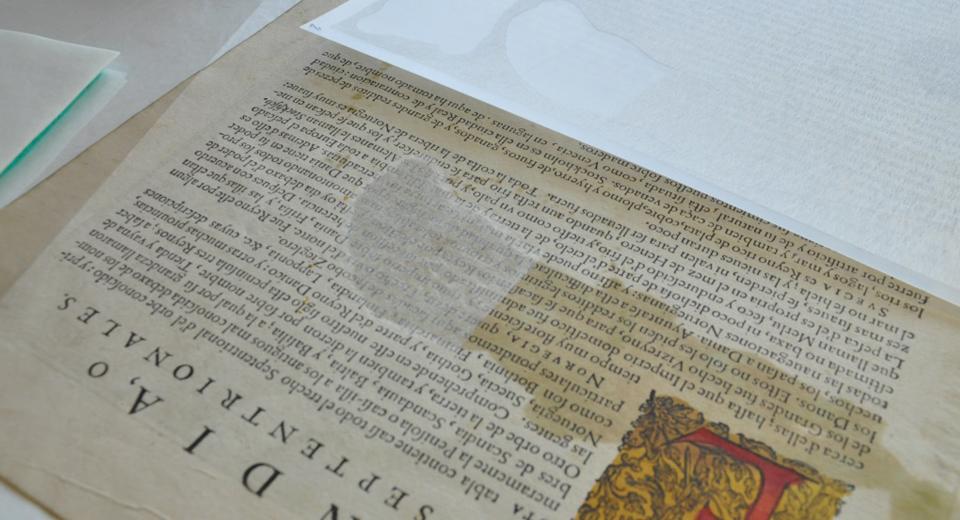
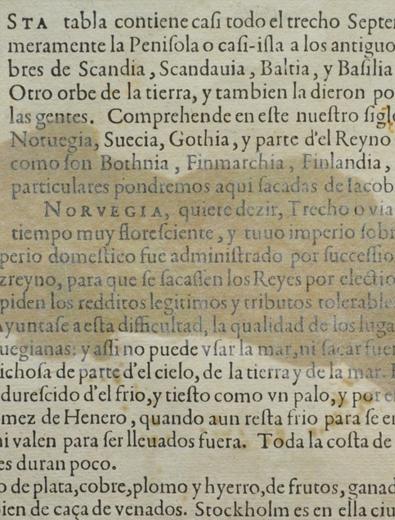
The conservation treatment proved to be very successful and the maps are now in a much more stable condition without adverse effects from moisture being a risk.
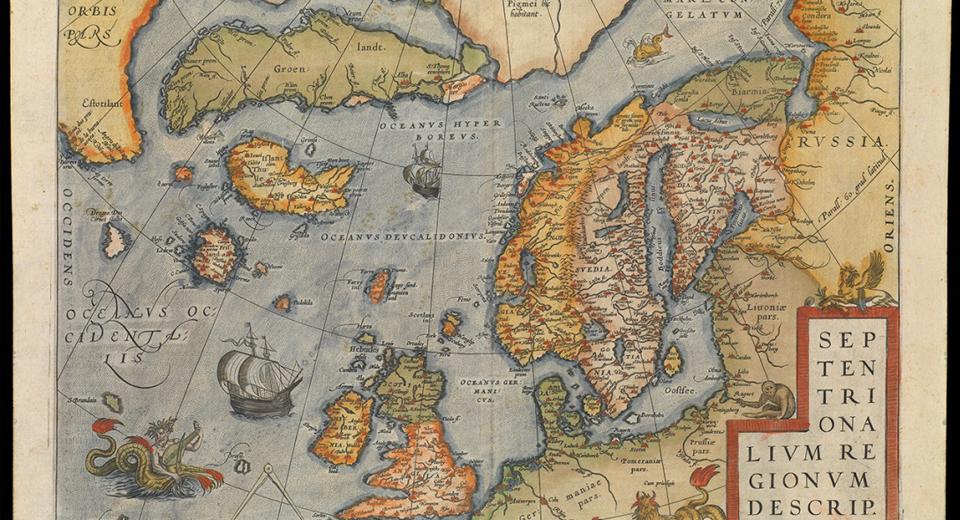
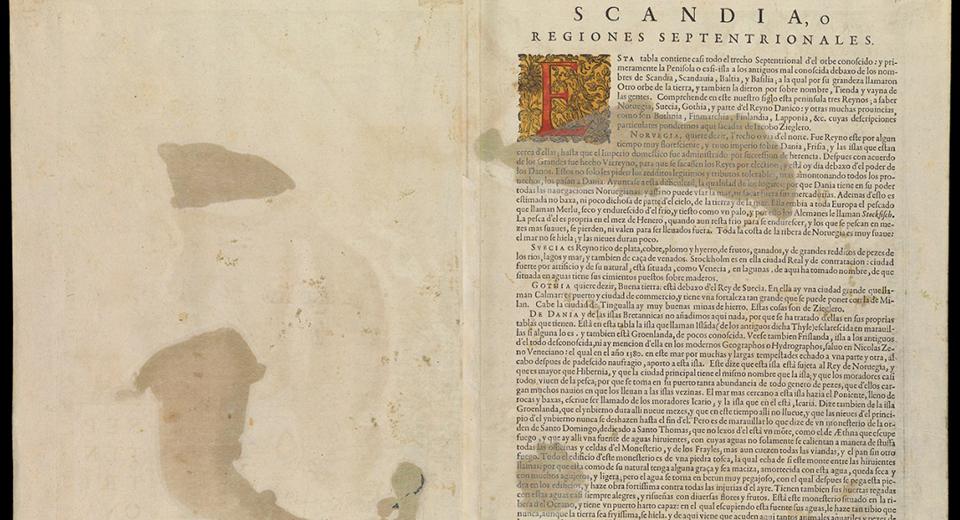
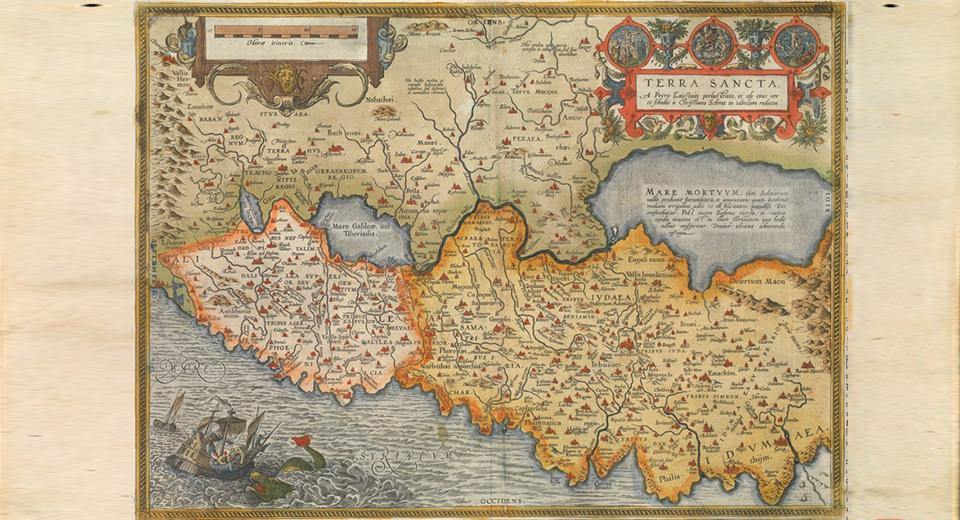
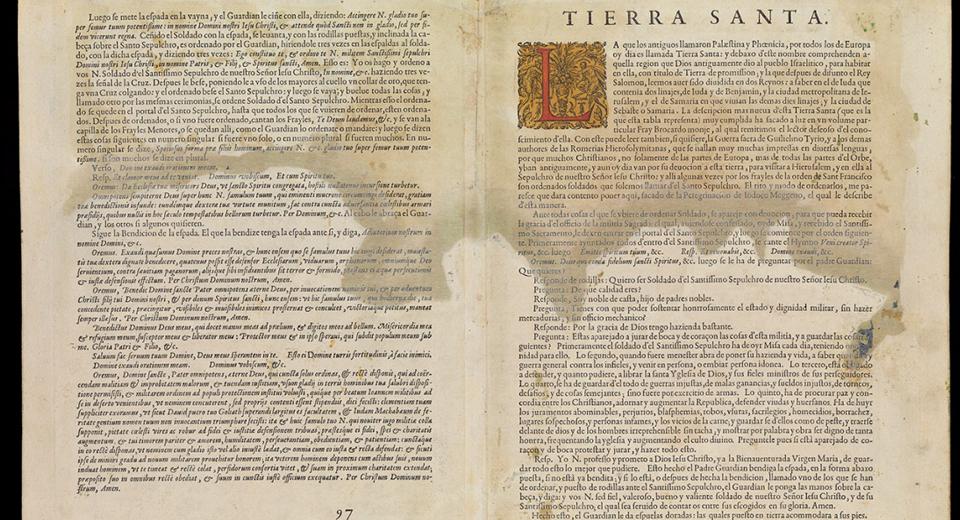
A number of these early maps and charts will be made available to see in our new permanent galleries which are being developed to open in 2018, but in the meantime readers can order these items for viewing in our specialist reference Caird Library